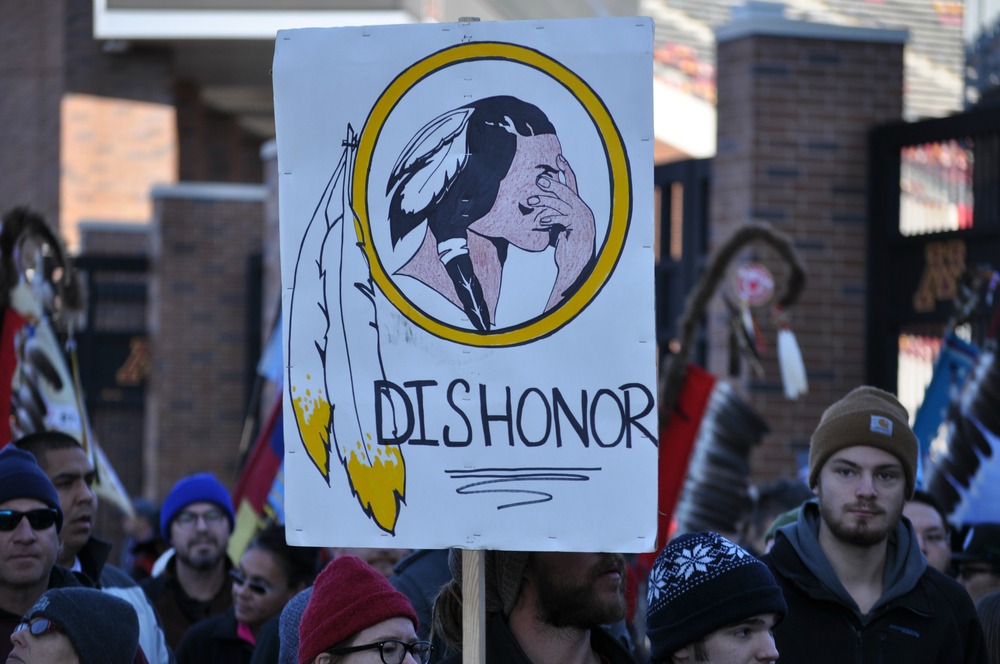
August 17, 2015; ESPN
The NFL franchise owned by Daniel Snyder plays its home games at FedEx Field, originally called Jack Kent Cooke Stadium, in Prince Georges County, Maryland, outside of Washington, D.C. Opened only in 1997, a decade later Snyder was meeting with officials in Washington and Virginia to discuss a possible new stadium.
Although eager for a new stadium, team president Bruce Allen curtly told reporters that the team would not consider changing its racially disparaging name even if the name were the obstacle preventing a new stadium site. Might it be an obstacle? The answer is definitely “yes”—especially if the team wants to return, albeit in a new stadium, to its old site in Southeastern D.C.
The RFK Stadium is on land leased by the National Park Service to the city, a lease that doesn’t expire for 22 years, though the team would want a lease extension if it were to build a new stadium on the site and move there. However, Department of Interior Secretary Sally Jewell, who oversees the National Park Service, views the team’s racially troubling name as “a relic of the past and believes it should be changed,” according to a spokesperson.
The Change the Mascot organization that has been among the leaders of the movement to get Snyder to find a new team name that doesn’t insult an entire race of people reacted to Allen’s “no”: “The team and its leaders are so obsessed with clinging to a dictionary-defined racial slur that they are willing to abandon their hometown and local fans in order to continue degrading Native Americans,” said Joel Barkin, a spokesperson for Change the Mascot and a vice president for communications with the Oneida Nation.
Sign up for our free newsletters
Subscribe to NPQ's newsletters to have our top stories delivered directly to your inbox.
By signing up, you agree to our privacy policy and terms of use, and to receive messages from NPQ and our partners.
Allen and Snyder might not want to, but would do well to recall that the federal government has used its control of land for a stadium in the past to get the team to change policies. The Washington NFL franchise was controlled by George Preston Marshall as far back as the 1930s. Marshall was quite satisfied with owning a racially segregated team, spurning opportunities to draft black ballplayers even if it meant passing on the likes of Jim Brown in favor of white recruits.
In the 1960s, with the Civil Rights Movement at its apogee—and Washington as a majority black city at the time—the pressure was on Marshall to join the modern world and integrate the team, but Marshall was steadfast in his racism. However, the team was about to move into a new stadium, D.C. Stadium, later renamed for Robert F. Kennedy, Jr. JFK’s Secretary of the Interior, Stewart Udall, gave Marshall an ultimatum: Integrate the team, or the team would not be allowed to play in the stadium.
Marshall refused, and Udall for some reason backed down and let them play their 1961 season in the stadium. However, Udall raised the issue again before the 1962 season, and he didn’t back down this time. Marshall couldn’t bear to do it himself, so he sent a coach to the draft to pick a black player. (The team actually drafted and then traded Ernie Davis, selecting five other black players instead.)
As a result, it was the Secretary of the Interior who in 1962 compelled the Washington NFL franchise to begrudgingly desegregate. Could a similar thing happen in 2015, with the Secretary of the Interior convincing tough guy Snyder and his consigliere Allen to change the team’s racial moniker? For Daniel Snyder and Bruce Allen, the times may require them to change, much like the team did more than half a century ago.—Rick Cohen











